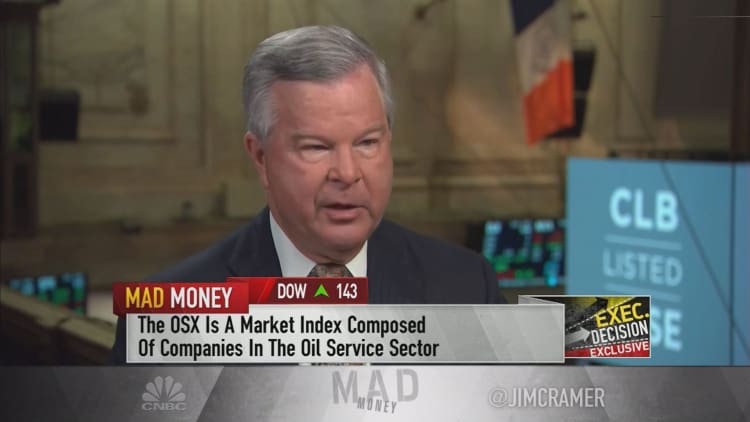Oil prices went into free fall on Wednesday afternoon, plunging on a raft of bearish news and posting their worst performance in over a year.
Crude futures briefly pared losses in morning trade after the U.S. government reported a huge 12.6 million-barrel drop in crude stockpiles, but the market quickly shrugged off the weekly data.
Instead, traders were focused on supply concerns as Libya resolved a major disruption to its crude exports and Saudi Arabia reported a big jump in output for June. Meanwhile, renewed trade tensions weighed on market sentiment.
International benchmark Brent crude fell $5.46, or 6.9 percent, to $73.40, its worst performance since February 2016.
U.S. light crude ended Wednesday's session down $3.73, or 5 percent, at $70.38 a barrel. That marked its biggest daily drop since June 2017.
"There's no real support. You're seeing some at $70, but we could go down to $64, where we took off from."
Oil prices fell along with stock markets and other commodities after the Trump administration threatened to slap tariffs on another $200 billion in Chinese goods. The prospect of a worsening trade war has raised fears of slower global growth that could clip demand for oil.
China has also threatened to tax U.S. crude imports. The country has emerged as one of the biggest buyers of American oil since the United States lifted a ban on crude exports in 2015.
"The increase in global trade has been a significant factor lifting world economic growth to higher levels in both 2017 and 2018," OPEC said on Wednesday.
"Hence, if trade tensions rise further, and given other uncertainties, it could weigh on business and consumer sentiment. This may then start to negatively impact investment, capital flows and consumer spending, with a subsequent negative effect on the global oil market."
Also on Wednesday, OPEC reported that its output increased in June, as the group's top producer pumped at its highest level since the end of 2016. The group agreed last month to start easing production caps put in place in 2017 to drain a prolonged crude glut and lift prices.

Oil's price fall was aided by news Tripoli-based National Oil Corp (NOC) had lifted a force majeure on four Libyan oil ports, saying production and exports from the terminals would "return to normal levels in the next few hours."
Libyan oil production fell to 527,000 barrels per day (bpd) from a high of 1.28 million bpd in February following the port closures, the NOC said on Monday.
The United States offered some measure of relief on Tuesday, when Secretary of State Mike Pompeo signaled the United States could enforce sanctions on Iran less stricly than originally feared.
The State Department sent oil prices soaring two weeks ago when a senior official told reporters the agency is pushing oil buyers to cut Iranian imports to zero by Nov. 4.
On Tuesday, Pompeo told Sky News Arabia, "There will be a handful of countries that come to the United States and ask for relief from that. We’ll consider it."
— Reuters contributed to this report.


